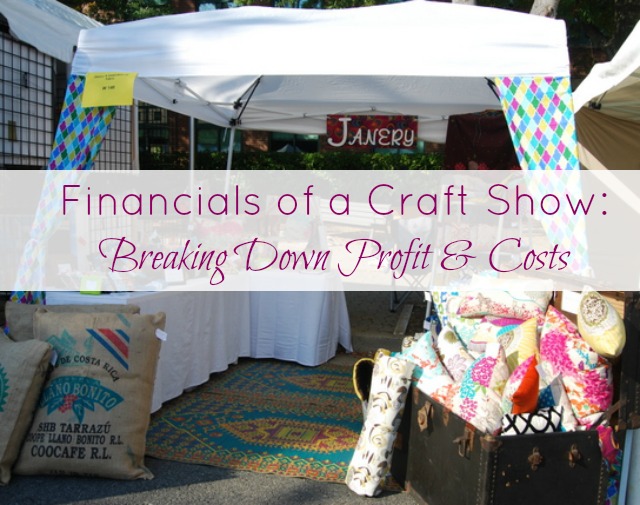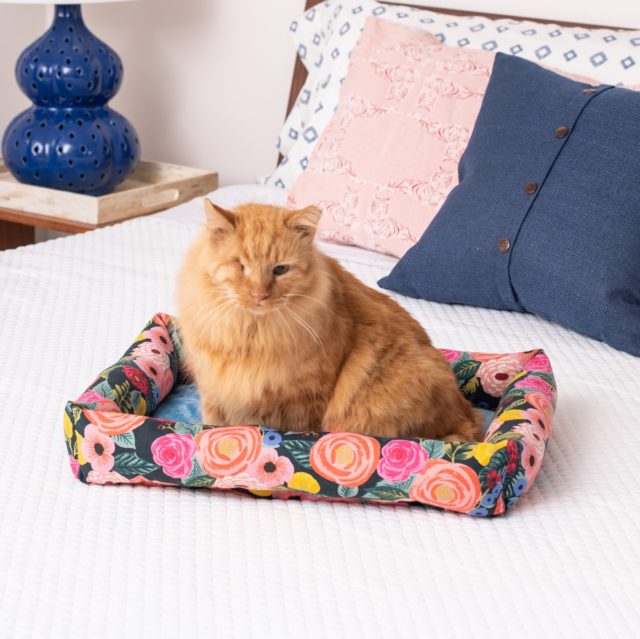Have you ever wondered what financial profit sellers make at craft shows? If you’ve tried to search for it online, you’ve probably come up short.

I’m an information junkie, so I’ve read a ton of blog posts on craft shows over the last few years. The blog world is overflowing with solid advice on craft show preparation, branding, booth display, and customer interaction. But have you ever tried to find out about the financial side of participating in a show? None of the posts I’ve found have really come out with facts on what you can expect, financially, from a show.
Maybe it’s because everyone is too polite to talk about money.
Since I’m not embarrassed to talk about money, I’ve decided to share my experience with the financials of both good and bad shows.
My Best and Worst Shows
At my very first show, Viva Vienna, I didn’t track my sales on paper, but I think I remember doing about $800 in sales. $660 on the first day and very little the second day. At the time I was ecstatic about the first day’s $660 in sales, because it was exciting to have people buying my products. The second day was 105 degrees and sunny and no one was buying. With a booth fee of over $200, that was depressing. I didn’t even bother to calculate my loss for the entire show.
At my most recent show, Art on the Avenue, I did approximately $1600 in sales. That sounds really good for a one day show, doesn’t it? Let’s take a closer look at the true profit.
Assessing True Profit
- Gross Sales at Show $ 1600
- Product Production Cost -$ 695
- Booth Fee -$ 185
- Cost of My Time at Show -$ 240
- Profit $ 480
1. First, I have to subtract the product production cost, which includes the price of materials and labor. Right now that labor is me, but I have always included it in pricing because I hope to hire a seamstress.
To get the production cost, I have to use my average markup. The markup on my products varies and I track it all with a pricing spreadsheet.
My average product markup is 130%. (This means that I take my product materials & time cost and multiply by 2.3.) Some are marked up more, some less.* At my 130% markup, that means that the production cost was $695, or 43% of my sales.
2. Next I need to subtract the booth fee of $185. These fees vary by show. I’d rather pay a high booth fee for a very busy, large show than pay a low fee for a small show, since the same amount of time is required either way.
3. I’d be silly not to subtract the value of my time, which really brings the true profit down. I spent 12 hours working on the day of the show. Let’s assume that I pay myself $20/hour. That’s $240 in labor costs on the day of, and it doesn’t account for all the time Ryan spent helping me load the car, setup the booth, and break it down. It also doesn’t account for the time I spent preparing the night before.
4. This leaves me with my true** profit: $480
Suddenly that day of $1600 in sales doesn’t sound quite so glamorous, does it?
Before you decide that shows are a waste of time, however, let me assure you that I still love shows! There are many reasons why I participate in shows beyond just the possible financial benefits, which I will discuss in my next craft show post.
In the meantime, please let me know if you have any additional questions about my experiences at shows. I’ll gladly answer them in a future post.
*I should have a 200% markup, especially if I ever want stores to sell my products, but that’s a topic for another time.
**Are you wondering why the cost of my time isn’t profit? Because even if a business makes enough to pay the employees (in this case, me), there needs to be cash left over to keep in the bank and to reinvest in the business – for new equipment or materials, for example.




No Comments